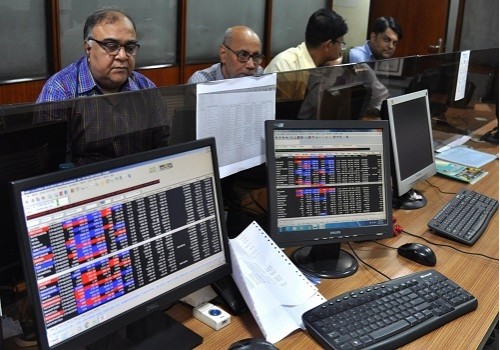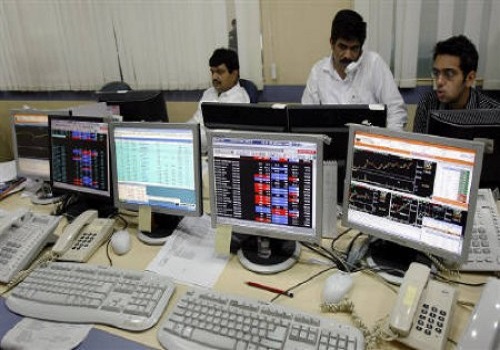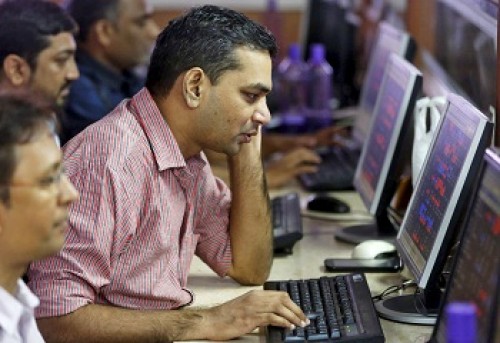Monthly Equity Market Commentary By Mr. Sorbh Gupta, Quantum AMC

Follow us Now on Telegram ! Get daily 10 - 12 important updates on Business, Finance and Investment. Join our Telegram Channel
Below is quote on Monthly Equity Market Commentary by Mr. Sorbh Gupta- Fund Manager- Equity, Quantum AMC.
S&P BSE SENSEX fell by -3.78% on a total return basis in the month of November 2021. It has underperformed S&P 500 (-0.69%) and Dow Jones Industrial Average Index (-3.5%). On a YTD basis, S&P BSE SENSEX has underperformed S&P500 by 2.48%.
The broader market has outperformed the S&P BSE Sensex this month. While S&P BSE Midcap Index has declined by -2.1% the S&P BSE Small-cap Index was flat. With this month’s performance, the mid-cap & the small-cap indices have given the return of 39.1% & 55.5% respectively on a YTD basis. Health Care, IT & power sectors stood out giving positive returns in an otherwise declining market.
Quantum Long Term Equity Value Fund (QLTEVF) saw a -4.62% decline in its NAV in November 2021. This compares to a -3.2% decline in its benchmark S&P BSE 200. Cash in the scheme stood at approximately 4.4% at the end of the month. The portfolio is valued at 12.9x FY24E earnings vs the S&P BSE Sensex valuations of 18.8x FY24E earnings.* QLTEVF’s portfolio positioning remains tilted towards cyclicals as they benefit the most from a broad-based economic recovery.
FPI outflows continue due to taper tantrums
Nov-21 has seen FPI outflows of US$ 790 mn vs outflows of US$ 1,801 mn in the month of October-21. On a YTD basis, FPI inflows stand at US$ 5,219 mn. India’s relative outperformance over the other emerging markets has possibly triggered reallocation calls from EM dedicated hedge-funds. US Federal Reserve’s imminent tapering & hawkish commentary on inflation has also been the catalyst for near term FII outflows. However, given the improving macro-outlook of India’s economy, inflows should resume after a pause. DIIs have remained net buyers for November 2021 to the tune of US$ 2,119 mn.
New Covid-19 Variant sparks fear of a third wave
Just as we start to think, that Covid-19 is a thing of the past, a new variant erupts to surprise us. In February 2021 it was ‘Delta’, this time it is ‘Omicron’ (emerging from South Africa). There is much uncertainty around the new variant, whether existing vaccines will work on it. Or is it more infectious than the previous variants? It is too early to assess the social & economic impact of the new variant in the next few months but what is certain is more uncertainty. The following chart is the comparison between South Africa & India in terms of daily new cases (per million) & vaccination coverage. The sharp spike in cases in South Africa recently is entirely driven by the new variant. In terms of vaccination coverage, India is in a much more comfortable situation but the efficacy of vaccines on the new variant still needs to be proven.

‘We can retire the term ‘Transitory Inflation’’. This recent statement by U.S Federal Reserve hastens up the road map for a reversal of the easy liquidity environment, in place for the last eighteen months. This is perhaps the first time in close to a decade when the U.F Federal Reserve has acknowledged inflation as a concern. This will have a bearing on equities globally. In India too, RBI will have to take cognizance of high inflation and move interest rates accordingly.
As in the case of bonds, where longest maturity bonds are the most sensitive to interest rate changes in equities too stocks with high valuations are the most sensitive to increase in the cost of capital. Investors should steer clear from pockets of high valuation both in primary & secondary markets. Some of the recently listed new-age companies (while they have a robust business case & tremendous opportunity size) will find it difficult to fund their growth through cash burns in an environment where the cost of capital is increasing. Investors should look at active funds with portfolio P/E multiples ideally more attractively valued than the benchmark but offering a very similar or higher growth profile. Lower P/E reduces the drawdown risk, but a similar growth outlook indicates the portfolio’s ability to capture the upside sufficiently.
Headlines of a quicker than expected Fed tapering & new Covid-19 variant may have coincided but they are mutually exclusive events from a macroeconomic perspective. Consider this, if Omicron emerges as highly virulent it will lead to lower mobility & lockdowns, impacting the demand of goods & services & cooling off the inflation. On the other hand, if the variant is
mild then the economic activity will not get impacted. In either case, markets should stabilize after initial bouts of volatility. Investors should not be unnerved by the near-term correction & steadily move towards their optimum equity allocation as per the long-term financial goals through systematic investment plans. Any sharp correction due to near-term headwinds can offer additional valuation comfort and should be used to allocate more to equities with a longterm perspective.
To Read Complete Report & Disclaimer Click Here
Above views are of the author and not of the website kindly read disclaimer










Tag News

We anticipate immense potential benefits from the upcoming Sovereign Gold Bond Tranche in FY...



More News

Weekly market outlook : The market is eagerly awaiting data on inflation and industrial prod...





 320-x-100_uti_gold.jpg" alt="Advertisement">
320-x-100_uti_gold.jpg" alt="Advertisement">




